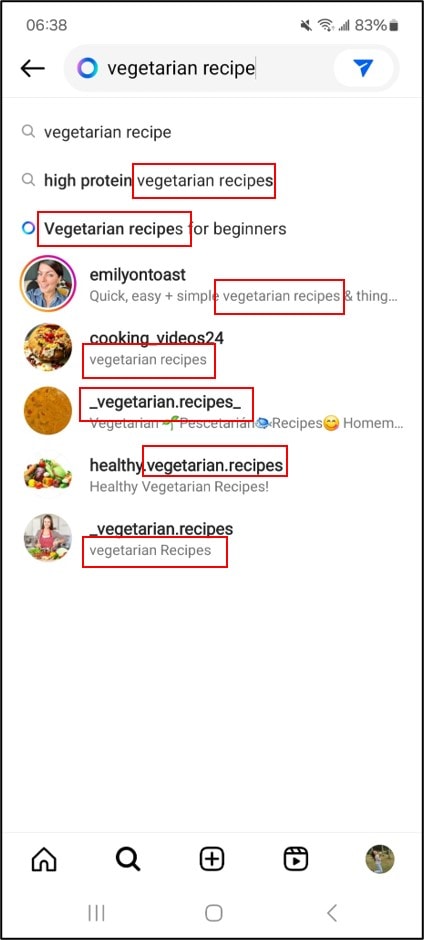
How Do You Rank Higher on Google? Not Like You’d Expect
July 18, 2024
This is What Your Fractured Tech Stack Costs You
August 27, 2024What do an iPhone, smartwatch, Ring doorbell, multi-tool pocket knife, and water polo have in common? They’re all examples of mashup inventions, or, simply put, hybrid creations that combine two or more elements into a single solution. Remember when you used to carry a separate phone, calculator, music player, and camera? Thanks to mashup inventions, you don’t have to anymore. By combining product A and product B, you get product AB.
Imagine applying this same concept to the digital marketing landscape. What happens when you merge SEO principles with social media? The result is a game-changing strategy known as social SEO, which has the potential to revolutionize your social media presence.
As a professional content writer and SEO specialist, I was deeply intrigued by this new approach to social media. Now, after months of research, I am thrilled to share my insight with you too. So let’s break it down.
The Day Social Networks Became Search Engines
Have you ever wondered why all social platforms have a search feature? This question invites us to reconsider the role of social media and users’ behavior on these platforms.
Today, more than ever, the search bar is no longer just for finding friends. Instead, it is increasingly becoming a tool for brand discovery and information gathering. A Forbes survey from April 2024 reveals that 24% of respondents primarily use social media for online searches, with this percentage spiking among younger users.
With that in mind, social SEO (often referred to as SMO — Social Media Optimization) is built on the premise that users actively seek content on social channels rather than passively scrolling through feeds. In this sense, social networks function similarly to search engines. If so, why not apply the traditional SEO principles to social media to boost brand discoverability? By strategically using keywords and optimizing text-based elements, brands can appear in front of social media searchers like they do on Google.
But how does it work in reality?
Below are screenshots from my recent search on Instagram. When I typed “vegetarian recipe” into the search bar, several accounts featuring these keywords appeared (check out the red boxes on the left picture). A more specific query, “how to cook tofu,” yielded rich results with appealing visuals directly addressing my question (check out the right picture). The conclusion: using Instagram as an information search tool is indeed effective.
The Instagram Experiment

Search #1: Vegetarian recipe

Search #2: How to cook tofu
To ensure this applies to other platforms, I conducted similar searches on LinkedIn with both B2C (“how to ask for a raise,” the left clip) and B2B (“how to run Google ads,” the right clip) queries. As the clips below show, hundreds of results appeared for both tests, all incorporating the keywords from the original query. In conclusion, Social SEO is also effective on LinkedIn and is valuable for both B2B and B2C contexts.
The LinkedIn Experiment
B2C search: How to ask for a raise
B2B search: How to run Google ads
Hashtags vs. Keywords: Which is Best for Social Media Presence?
The experiment results demonstrate that social media platforms can effectively serve users searching for information, increasing content visibility through keywords. But if you’re not from Gen Z, doesn’t this sound like hashtags in social media?
Indeed, hashtags were once considered essential for brands aiming to improve their social media presence. However, their impact on reach appears to be diminishing, at least on some platforms. A Hootsuite experiment from March 2022 found that Instagram posts using keywords achieved 30% more reach and twice as many Likes compared to posts with hashtags.
While hashtags and keywords help users find specific content, hashtags are not the same as keywords for content discoverability. Hashtags deliver quick, instant results and trigger topical discussions but are not part of a broader SEO strategy. Keywords, on the other hand, meet users’ search intent, enhance brand credibility, and are a foundational element of SEO strategies. Social SEO can potentially support Google rankings, extending its impact beyond social platforms. Therefore, you should wait to abandon hashtags entirely. Instead, pair them with strategic keywords for maximum results.
The Impact of Social Algorithms and Social SEO on Social Media Presence
Another noteworthy factor influencing content visibility on social media is the (infamous) social algorithm. However, it is quite different from social SEO, and the distinction is striking.
Social media algorithms determine what content to show, when, and to whom based on factors like trending topics, consistent publishing, and engagement rates. These algorithms personalize users’ feeds by featuring content aligned with their interests and behavior on the platform. In contrast, social SEO takes a more active approach to visibility by using relevant keywords to appear at the top of search results. This means that even if your content isn’t widely popular or featured in many feeds, SEO-optimized content can still rank highly in search results.
In essence, the difference between relying on social algorithms and leveraging social SEO resembles the difference between “posting and hoping for the best” versus strategically enhancing content findability. While social algorithms operate behind the scenes to determine content distribution, social SEO empowers creators to actively influence their content’s discoverability.
Decoding Social SEO — How Do You Do it Practically?
Treating social media as a search engine demands a significant mindset change, particularly for social media content creators who may be hesitant to delve into the world of SEO. Recognizing this challenge, I've developed a framework to assist my team in adopting and adapting key social SEO strategies into our social media practices.
Below is my system for implementing social SEO, with each letter of the term representing a key element to incorporate in such strategies. While this system covers fundamental principles, it doesn’t encompass every best practice, and variations across different platforms may exist. Nevertheless, this framework provides a solid foundation for integrating SEO strategies into social media content creation.
I hope you will find this helpful too.
S — Search bar: Use it to run your keyword research.
O — Overlay text: Integrate your keywords as overlay text on the image.
C — Caption: Place keywords strategically in your captions and descriptions.
I — Image alt-text: Provide detailed descriptions (2-3 sentences) with relevant keywords.
A — Avoid stuffing: Incorporate relevant keywords sparingly so they do not seem forced or spammy.
L — Location tags: Enable location features and include geographical information in your account bio.
S — Subtitles & Say the word: For video content, vocalize your keywords and enable subtitles
E — Engage with the audience: Foster engagement, as it is a crucial social signal and ranking factor.
O — Optimize your account/profile: Ensure your profile is complete, including your website, location, industry, and about section (specifics vary by platform).
Harnessing the Power of Social SEO for Your Brand
In today’s crowded digital landscape, brands across all sectors must optimize their online presence across appropriate channels. If social media is relevant to your business and industry, now might be the time to consider a more strategic approach to social media marketing efforts.
Remember, social SEO is not about replacing traditional SEO or social media strategies but combining their strengths to create a more robust online presence. When you can serve your customers better, you are more likely to earn their trust and their wallets.








